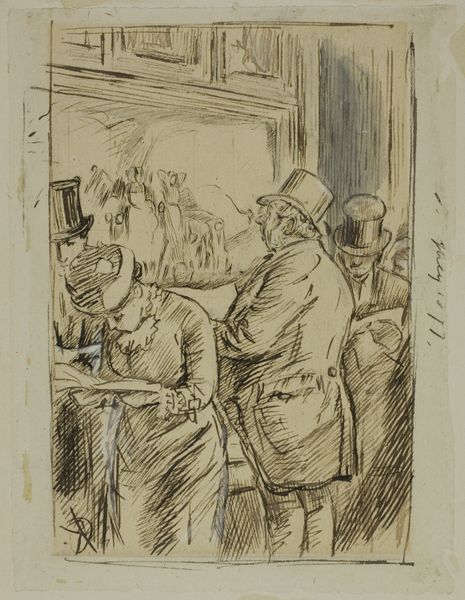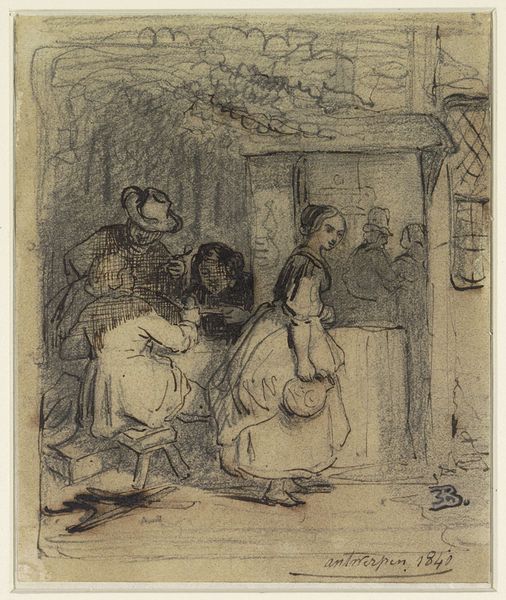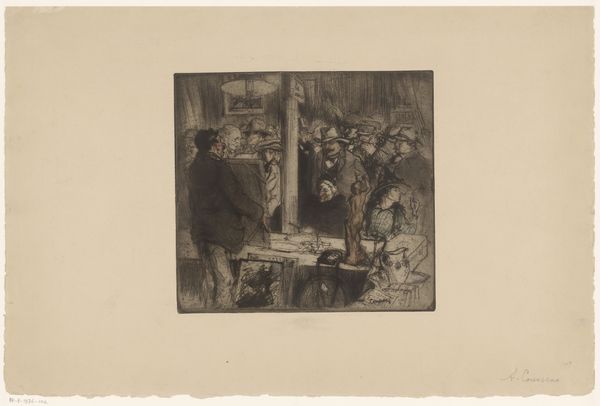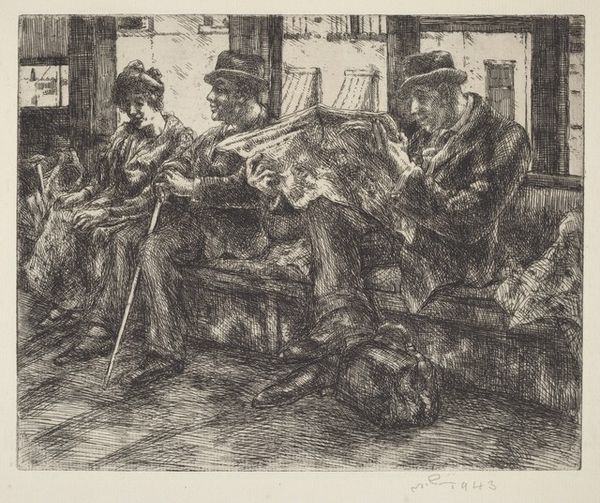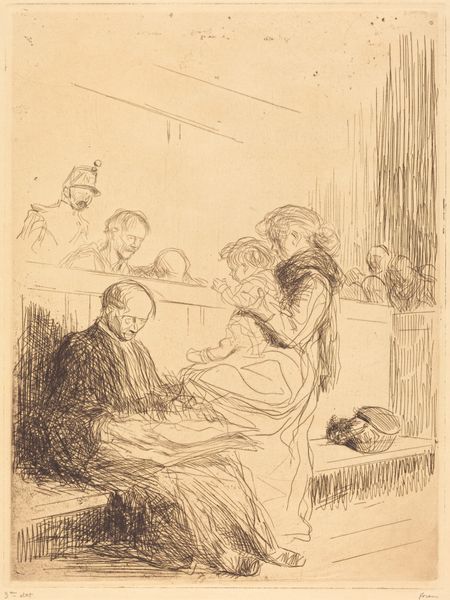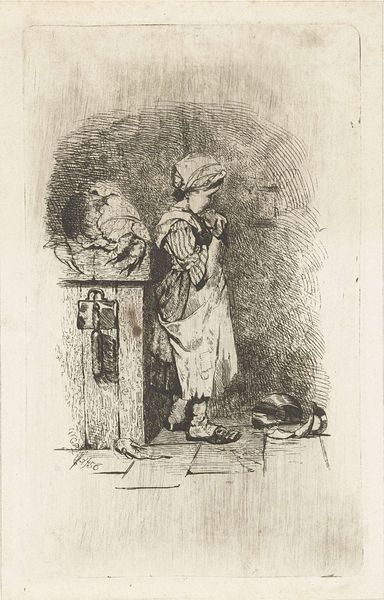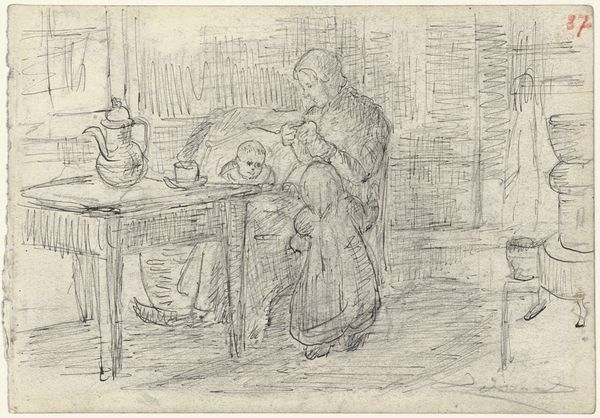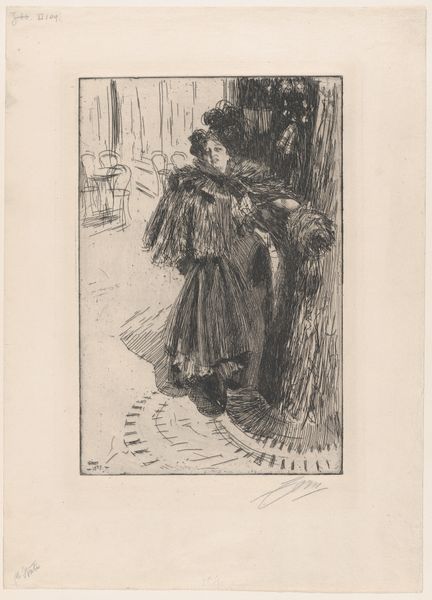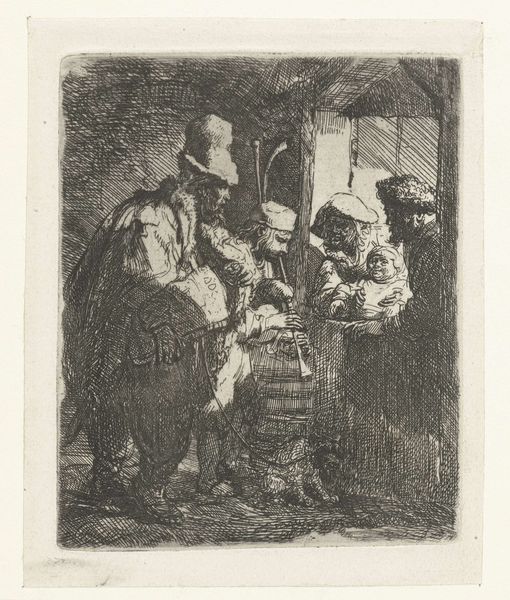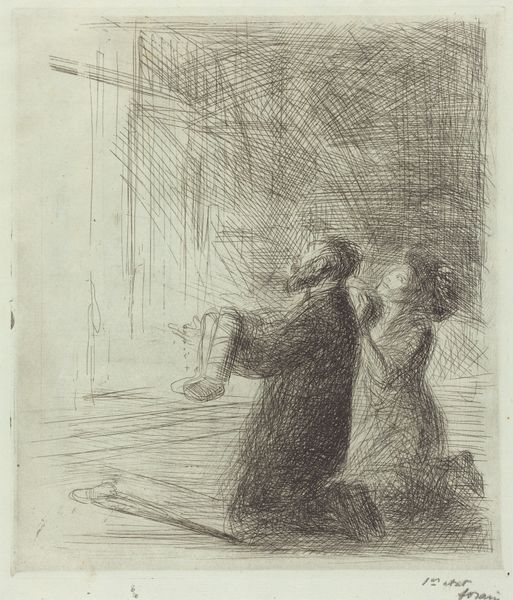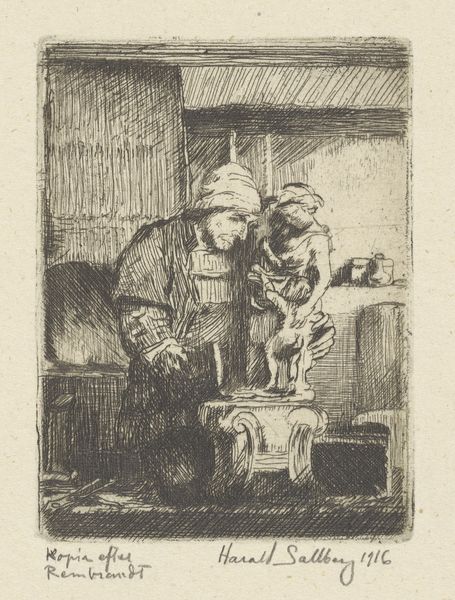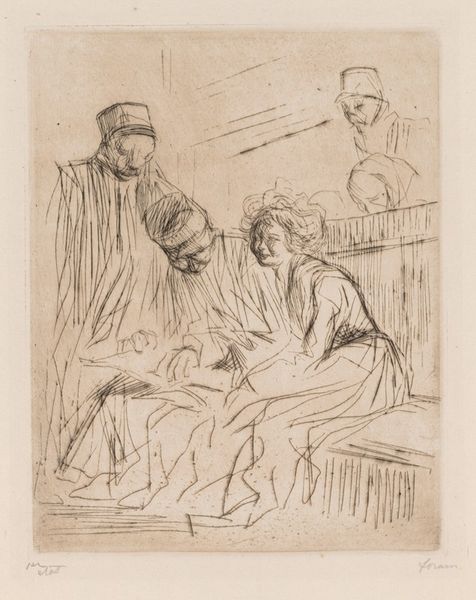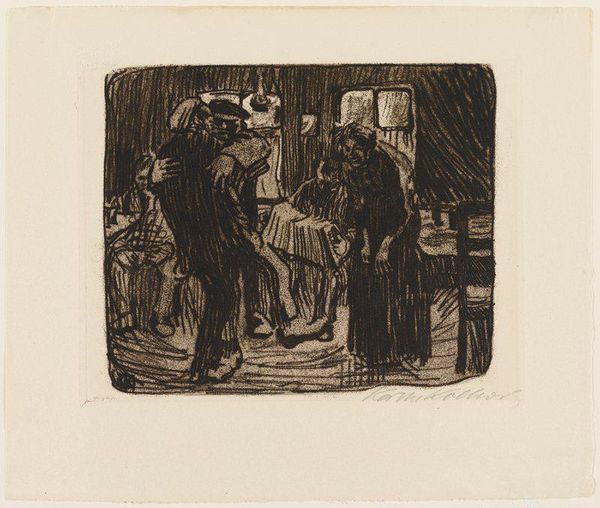
Verdunois at the Gare de l'Est Station 1915 - 1917
0:00
0:00
Dimensions: 378 × 338 mm (image); 520 × 384 mm (sheet)
Copyright: Public Domain
Curator: Just look at the deep sadness of this drawing. Editor: Indeed. What we're looking at is a lithograph, an ink drawing on paper, titled "Verdunois at the Gare de l'Est Station," created by Théophile Alexandre Steinlen between 1915 and 1917, and it's currently held at The Art Institute of Chicago. The date situates it squarely in the midst of the First World War. Curator: Those Verdunois look completely shell-shocked... And is that a hand warmer that the woman is clutching? Or a purse? Editor: Yes, a muff or hand warmer, probably. But let’s consider the composition. Note how the figures are rendered with such rough, almost frantic, strokes. It adds to the sense of anxiety, wouldn’t you agree? The looming shapes of others, faceless refugees, only add to the emotional distress on display. Curator: Absolutely. There's something profoundly haunting about how Steinlen captures their weariness and disorientation. We need to understand the context. The people are most likely refugees who had escaped from Verdun at the beginning of the WWI because it was almost completely destroyed, facing horrors we can barely imagine today. Editor: Right, the Gare de l'Est in Paris became a primary arrival point for refugees fleeing the war’s front lines. Seeing it, one wonders about the artist. Did he experience the horrors of war or see it with his own eyes? Curator: Steinlen lived in Paris and portrayed social realism throughout his career. During the war he refocused on patriotic and pro-allied propaganda to rally the public, so his vision can feel both compassionate and instrumental. Editor: Yes, perhaps his aim wasn't to purely reflect but also to shape public opinion during wartime. Knowing the context is critical, allowing for more nuanced and balanced interpretations of pieces like this. But for me it remains a painful reminder of the devastating costs of conflicts—the loss, the displacement, the psychic scars. Curator: Exactly. A crucial function of art lies in memorializing difficult and unsettling past realities, such as the overlooked human element in war, beyond official historical chronicles and narratives.
Comments
No comments
Be the first to comment and join the conversation on the ultimate creative platform.
